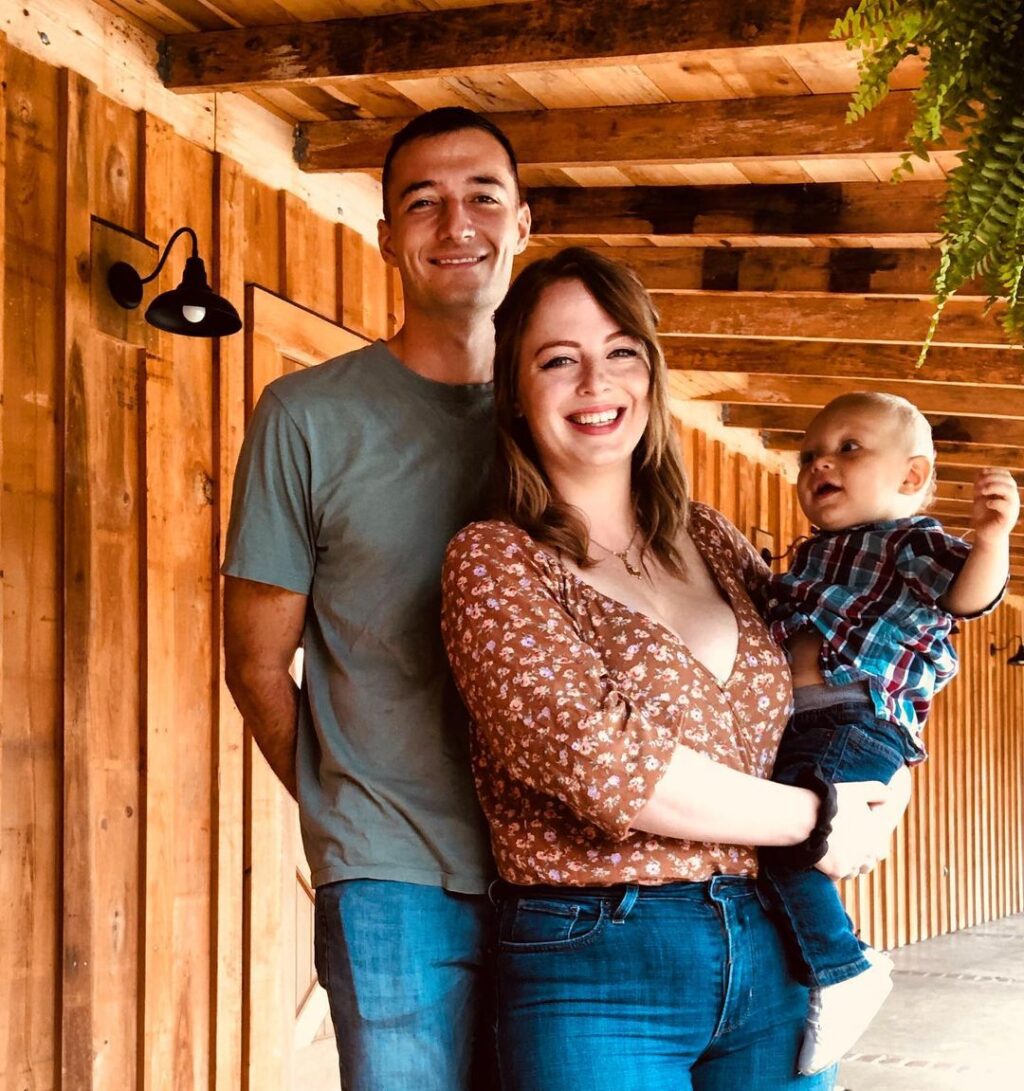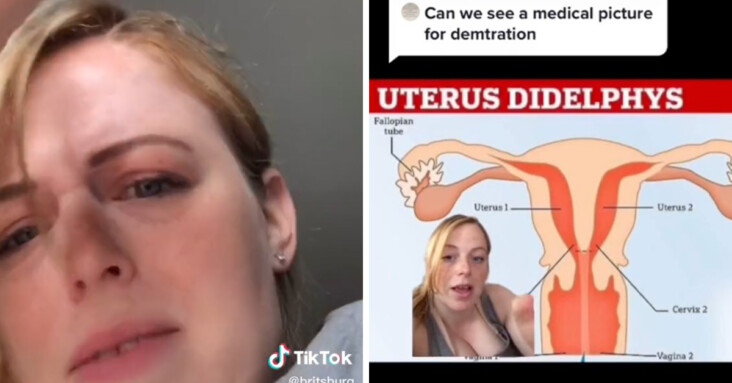When Brittany Jacob was younger, she noticed two openings in her vagina.
“I always believed it was my hymen, and as I got older, I thought it was just really tough and maybe would break one day,” she told BuzzFeed.

But that wasn’t the only clue that something was a little off for Brittany. She had two periods per month, terrible cramps, sex was painful, and she experienced extremely heavy bleeding. Her doctors did not see anything unusual, so she figured: that’s just how it is.
When Brittany went into labor with her first child, however, she finally received a diagnosis.

She shared that story in a video she uploaded to TikTok, which has soared past 2 million views.
“I’m giving birth and the nurse looks down and she says, ‘Oh honey, you have two vaginas, two cervixes, and two uteruses.”
Brittany was diagnosed with uterus didelphys — double uterus. Some people with uterus didelphys also have two vaginas.

“Both vaginas were completely normal and fully functional, but I was unable to pass a child, so my septum was cut — meaning now I only have one hole,” Brittany explained.
BuzzFeed spoke with Dr. Mary Jane Minkin, a clinical professor in the Department of Obstetrics, Gynecology, and Reproductive Sciences at Yale.
“The female reproductive system actually forms from two tubular structures (right and left) that join together,” Dr. Minkin said to BuzzFeed. “These tubes join together and basically form the uterus, cervix, and going down to the vagina. What happens also after these two fuse — the thing between the two as they get together goes away, it dissolves. And that’s called the septum between the two tubes. So what can happen is — depending on how much of the septum doesn’t disappear — as these two tubes fuse, you can end up with two totally next-door-to-each-other tracts.”
Dr. Minkin explained that there are many possible variations of how the condition can manifest.
The condition is not rare, though it does not happen often. “Basically, all gynecologists who get to be old see some patients with it in their lifetime,” Dr. Minkin said.
She also explained that while there can be reproductive complications, many issues can be fixed with surgery. There can also be a correlation of problems with the kidney, so Dr. Minkin said they usually also check the kidneys to make sure that function is normal.
Brittany’s painful periods were less common, but Dr. Minkin said it may be a result of an obstruction. “When there’s blood hanging around, you might get some extra contraction activity trying to kick it out of there,” she said.
After doctors cut her vaginal septum during her first birth, her second pregnancy was much easier. She said she carried both of her children in her right uterine horn. She has yet to have a period again after the two births, so she remains unsure if those symptoms have gone away.
She told BuzzFeed:
“I really want people to understand the importance of teaching more about female anatomy and helping women understand their own bodies. I cannot tell you how many women I know that don’t know proper terminology or the functions of their reproductive parts. I also want women to believe their gut when they think something is wrong. Doctors may not believe you the first five times, so make sure you say it the sixth time.”
Dr. Minkin told people with uterus didelphys to consult a fertility specialist if they did not feel their gynecologist could handle the condition. She also added, “My take home message is you’re not a freak, you’re not weird, and by definition: If I’ve seen something a few times, it’s not rare.”

